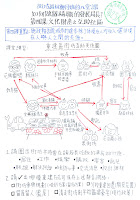How to be a good Secretary for Development"
The final worksheet in the series, to be published on 28th June 2008 by the neighbourhood group of Hing Wah St, Sham Shui Po on the 111th day after sitting down to dinner with Mrs Carrie Lam Cheng Yuet-ngor, the Secretary for Development responsible for the 'Four Rs'


This worksheet documents the dinner conversation and asks some of the questions which remain unaddressed. The worksheets are downloadable here in Chinese and English. (Click to enlarge). The kaifong has printed copies to send to Sydney for the Australian "Mao to Now" exhibition, so that people can take them home from the opening of the show.
In March 2008, the kaifong participated in a 'daydreaming workshop' in March at the garage, run by a visiting dutch artist, Elena Simons, a social inventor and founder of Wonder. One of the dreams they aligned on was to become a world-famous community, and they are very happy to be sending their work in an international exhibition.
Notes on policy and rights:
The URA states that residents and property owners have the right to object to development of their area:
People affected by URA development schemes and development projects have the right to object under the Town Planning Ordinance or URA Ordinance. Objectors are also allowed to appeal against Government decisions on development projects.
The Hong Kong Housing Society acquires the land for the Urban Renewal Authority. Both the organisations come under the Development Bureau. According to the Housing Society:
If the tenant refuses to accept our cash compensation or rehousing offer and/or fails to sign surrender agreement, the Housing Society will recover vacant possession of the affected premises in accordance with the prevailing law.
This statement is one of the tactics referred to in the conversation, brought up as a threat when the residents ask too many questions of the Housing Society.

























